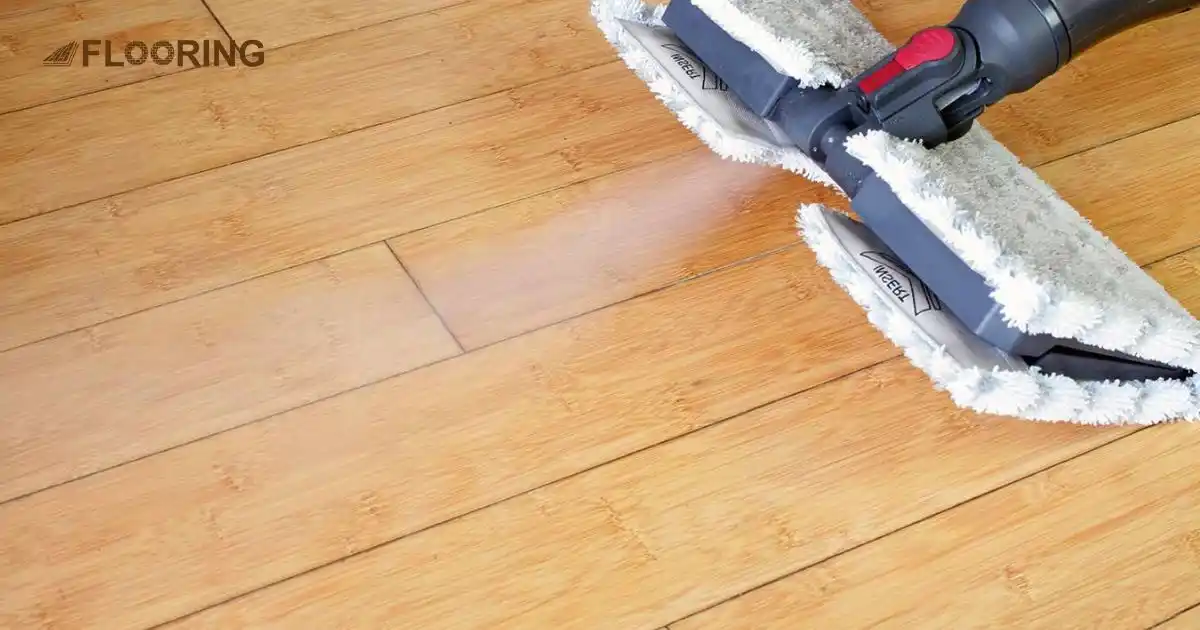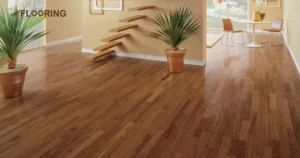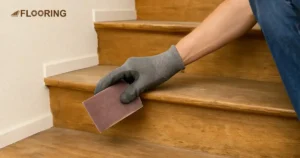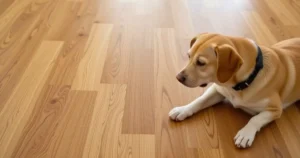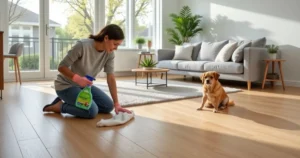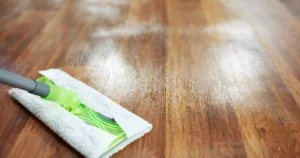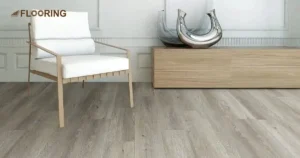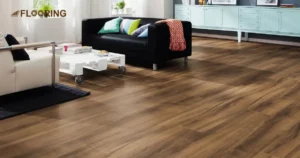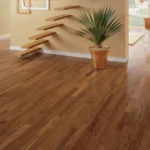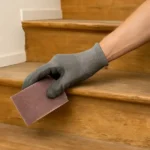The question of whether you can steam clean linoleum floors has become a hot topic in home maintenance. Many homeowners are drawn to the idea of using steam for a deep, chemical-free clean. However, concerns about potential damage to linoleum surfaces have raised doubts about this method’s safety and effectiveness.
It’s essential to weigh the potential risks and benefits of steam cleaning linoleum floors. This article will explore whether you can safely steam clean linoleum floors, considering expert opinions and manufacturer recommendations. We’ll also examine alternative cleaning methods to help you make an informed decision for your home’s flooring maintenance.
Key Takeaways
- Steam cleaning linoleum floors carries risks of moisture damage and adhesive weakening.
- Some benefits of steam cleaning linoleum include deep cleaning and chemical-free sanitization.
- Manufacturers generally advise against steam cleaning linoleum floors to protect warranties.
- Alternative methods like damp mopping are safer for cleaning linoleum floors.
- The decision to steam clean linoleum floors depends on their age, condition, and proper technique.
Potential Risks of Steam Cleaning Linoleum Floors
Steam cleaning linoleum floors can pose certain risks. While many homeowners are looking for effective ways to clean a linoleum floor, steam cleaning may not be the best solution due to the following risks:
- Moisture Damage: Excessive moisture penetration can harm linoleum floors. Steam cleaning may cause water to seep into seams and edges, leading to warping, bubbling, or separation of the flooring material.
- Adhesive Weakening: High temperatures from steam can weaken the adhesive bonding linoleum to the subfloor. This may result in loosening or lifting of the flooring, compromising its integrity and appearance.
- Color Fading: Intense heat and moisture from steam cleaning can potentially fade or discolor linoleum floors. This risk is particularly high for older or already worn flooring.
- Seal Damage: Steam can break down the protective sealant on linoleum floors. This may leave the surface vulnerable to stains, scratches, and further moisture damage.
- Bacterial Growth: If not dried properly after steam cleaning, excess moisture can create an environment conducive to mold and bacteria growth beneath the linoleum.
Benefits of Steam Cleaning Linoleum Floors
While there are risks to consider, steam cleaning linoleum floors can offer several advantages when done correctly. Here are the main advantages of steam cleaning linoleum floors:
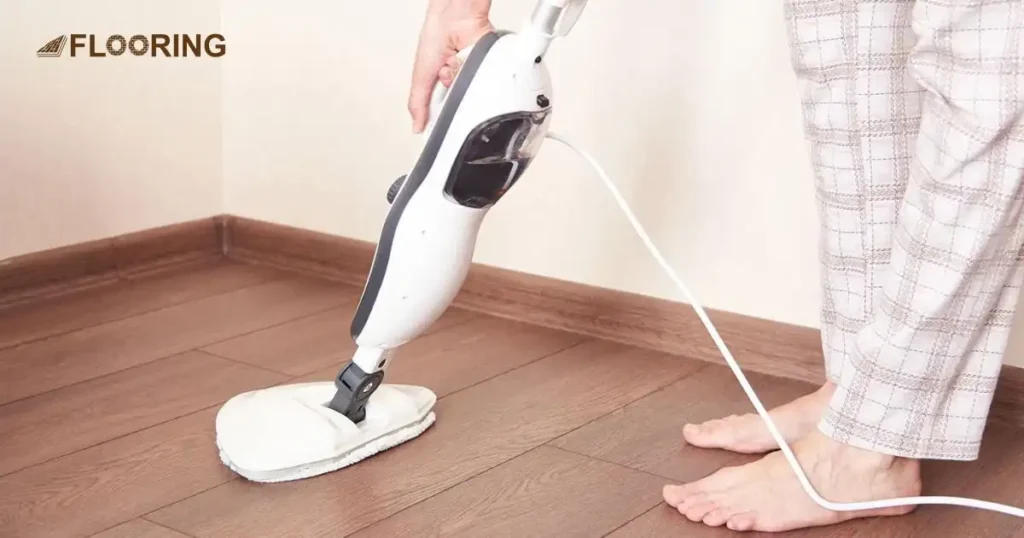
- Deep Cleaning: Steam penetrates pores and crevices, effectively removing dirt and grime. This deep cleaning action can restore the appearance of linoleum floors, making them look fresher and brighter.
- Chemical-Free Sanitization: Steam cleaning eliminates the need for harsh chemicals. It naturally sanitizes the floor, killing bacteria and dust mites without leaving chemical residues.
- Eco-Friendly Option: Using only water and heat, steam cleaning is an environmentally friendly choice. It reduces the use of chemical cleaners, benefiting both your home and the planet.
- Time-Efficient: Steam cleaning can be quicker than traditional mopping methods. It cleans and dries the floor faster, saving time and effort in your cleaning routine.
- Odor Elimination: Steam effectively neutralizes odors trapped in linoleum floors. This can leave your home smelling fresh and clean without artificial fragrances.
When Steam Cleaning Linoleum Floors Is Acceptable
Steam cleaning linoleum floors can be acceptable under certain conditions and with proper precautions. Understanding when and how to steam clean safely is crucial for maintaining your linoleum floors. Let’s explore the key factors to consider:
Age and Condition Considerations
The age and condition of your linoleum floors play a significant role in determining whether steam cleaning is suitable. Newer, well-sealed linoleum floors are generally more resistant to moisture damage.
These floors may tolerate steam cleaning better than older or worn surfaces. However, it’s essential to inspect your floors for any existing damage or weak spots before steam cleaning.
Proper Technique and Equipment
Using the correct technique and equipment is crucial when steam cleaning linoleum floors. A steam cleaner with adjustable temperature and moisture settings is ideal.
Set the steam cleaner to the lowest effective temperature and use minimal moisture. Move the steam cleaner quickly across the floor to prevent prolonged heat exposure.
Always test the steam cleaner on a small, inconspicuous area first to ensure it doesn’t damage the linoleum.
Alternatives to Steam Cleaning Linoleum Floors
If you’re hesitant about steam cleaning your linoleum floors, several effective alternatives are available. These methods can help maintain your floors without the potential risks associated with steam cleaning. Consider the following options:
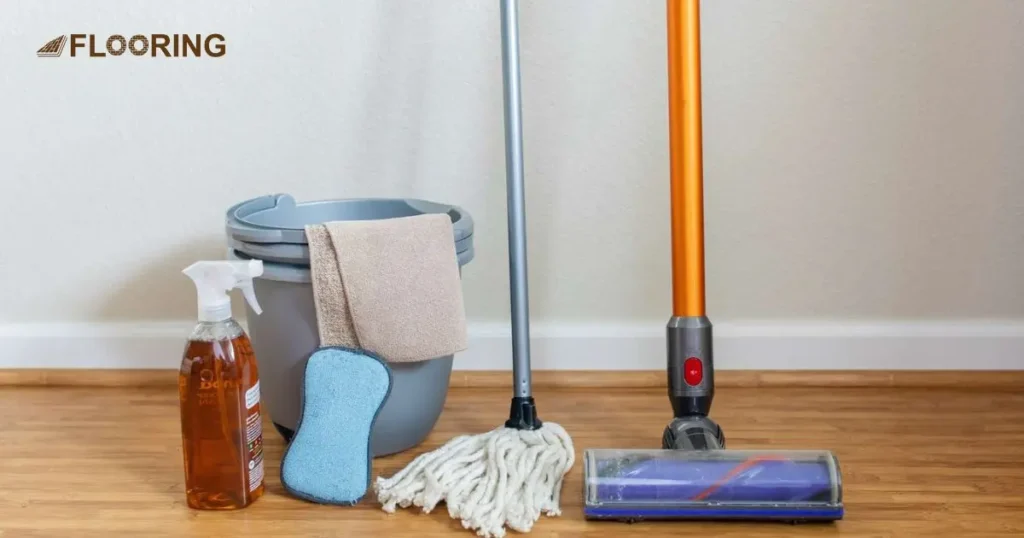
| Alternative Method | Description | Benefits |
| Damp Mopping | Use a well-wrung mop with warm water and a mild detergent. This method provides gentle cleaning without excess moisture. | Safe for most linoleum floors and effectively removes surface dirt. |
| pH-Neutral Cleaner | Apply a pH-neutral floor cleaner designed for linoleum. Follow the manufacturer’s instructions for the best results. | Cleans without damaging the floor’s surface or affecting its pH balance. |
| Vinegar Solution | Mix equal parts water and white vinegar for a natural cleaning solution. Use a damp mop to apply and rinse with clean water. | Provides a chemical-free cleaning option that can help remove stains and odors. |
| Dry Cleaning | Use a microfiber mop or electrostatic cloth to remove dust and light dirt. This method is ideal for regular maintenance. | Prevents moisture damage and is safe for daily use on linoleum floors. |
Manufacturer Stance on Steam Cleaning Linoleum Floors
Many linoleum floor manufacturers advise against steam cleaning their products. They often cite potential risks such as moisture damage and adhesive weakening. Some manufacturers explicitly state that steam cleaning may void the warranty on their linoleum floors. This stance is primarily due to the unpredictable nature of steam cleaning results.
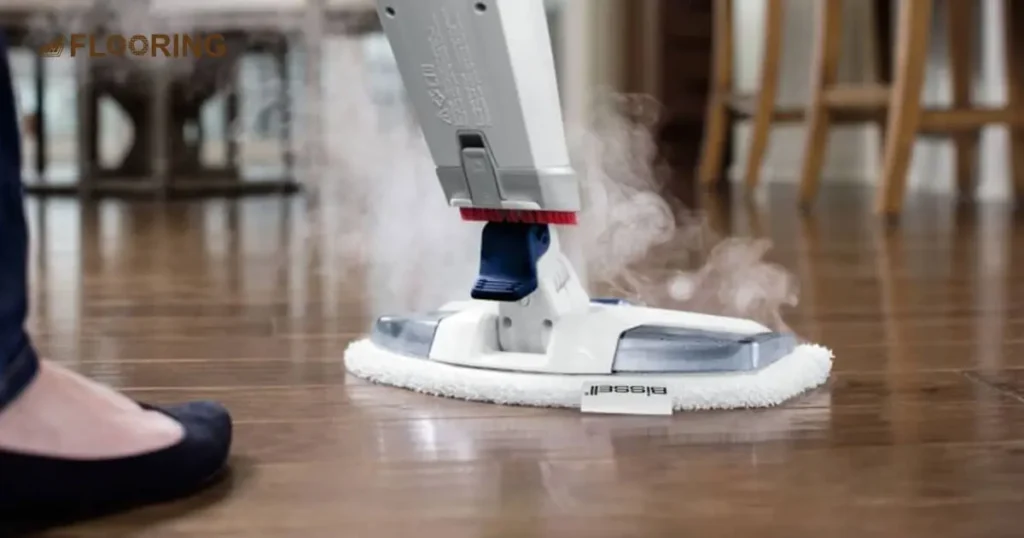
Manufacturers typically recommend gentler cleaning methods for linoleum floors. These include damp mopping with pH-neutral cleaners or manufacturer-approved products. Following these guidelines can help maintain your floor’s warranty and ensure its longevity. Always consult your specific flooring manufacturer’s care instructions before attempting any new cleaning method.
Closing Remarks
The decision to steam-clean linoleum floors depends on various factors. While it can offer deep cleaning benefits, the risks often outweigh the advantages. Most experts and manufacturers advise against steam cleaning linoleum due to potential damage.
Alternative cleaning methods are generally safer and equally effective for maintaining linoleum floors. These methods are often sufficient to maintain your floors without the need to polish linoleum floors frequently.
If you steam clean linoleum floors, proceed with caution and follow proper techniques. Always test a small area first and use minimal moisture and heat. Regular maintenance with gentler methods is usually sufficient for keeping linoleum floors clean and in good condition.
Frequently Asked Questions
How often should I steam clean linoleum floors?
Steam cleaning linoleum floors is not recommended. If you choose to do so, limit it to once or twice a year. Regular cleaning with gentler methods is safer for linoleum maintenance.
Can I use a steam mop on linoleum floors?
Steam mops are not ideal for linoleum floors. They can cause moisture damage and weaken adhesives. Stick to traditional mopping methods for safer linoleum floor cleaning.
What temperature is safe for steam cleaning linoleum floors?
No temperature is completely safe for steam cleaning linoleum floors. High temperatures can damage the flooring. If you must use steam, keep the temperature as low as possible.
How long does it take for linoleum floors to dry after steam cleaning?
Linoleum floors should dry within 30 minutes to an hour after steam cleaning. However, steam cleaning is not recommended for linoleum due to potential moisture damage.
Can steam cleaning remove old stains from linoleum floors?
Steam cleaning might remove old stains from linoleum floors, but it’s risky. Try safer stain removal methods first, such as baking soda paste or specialized linoleum cleaners.
Is professional steam cleaning safer for linoleum floors than DIY methods?
Professional steam cleaning isn’t necessarily safer for linoleum floors. Most experts and manufacturers advise against steam cleaning linoleum, regardless of who performs it.
How do I prepare linoleum floors for steam cleaning?
Preparing linoleum floors for steam cleaning involves sweeping and vacuuming. However, it’s important to note that steam cleaning is not recommended for linoleum floors due to potential damage.
